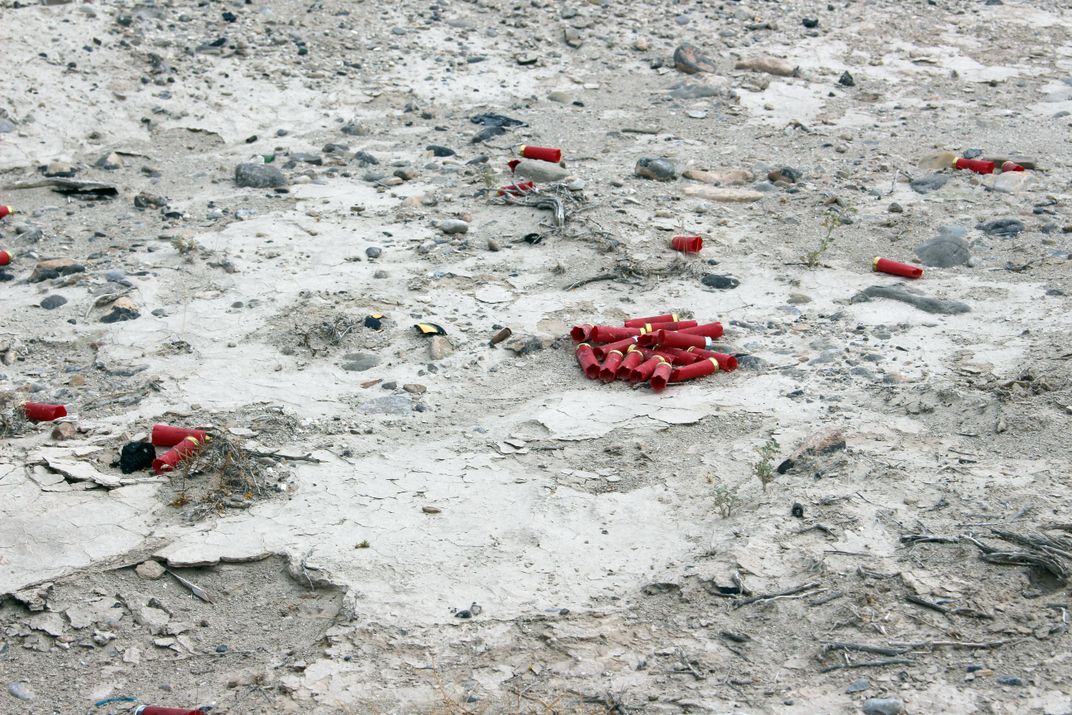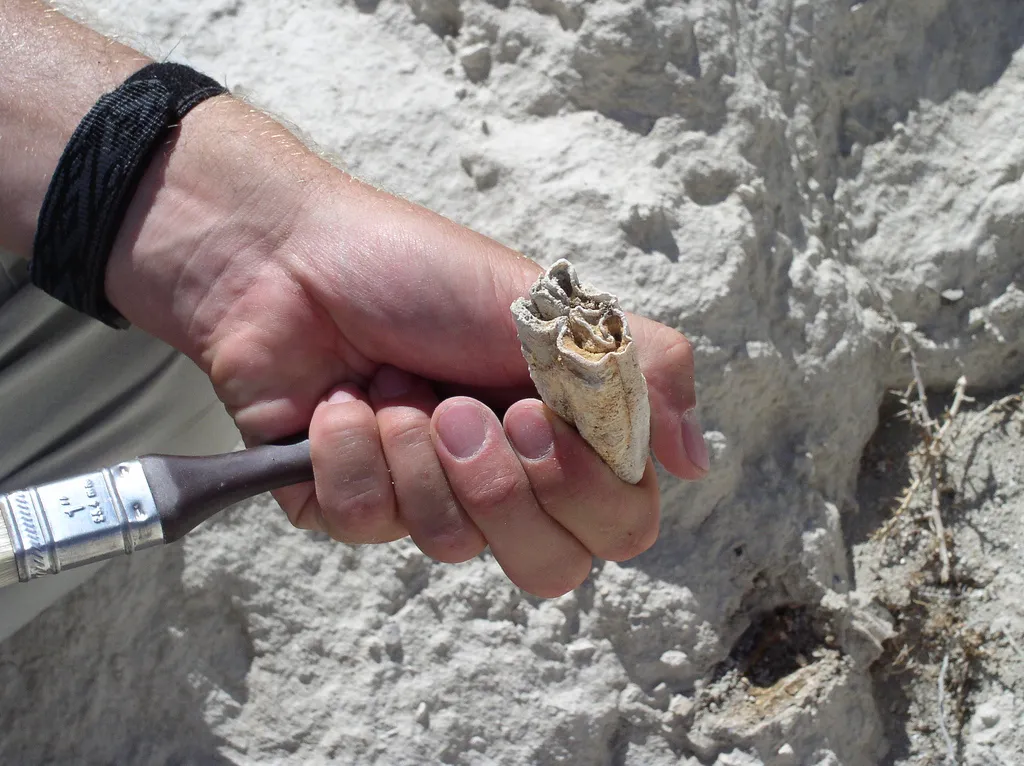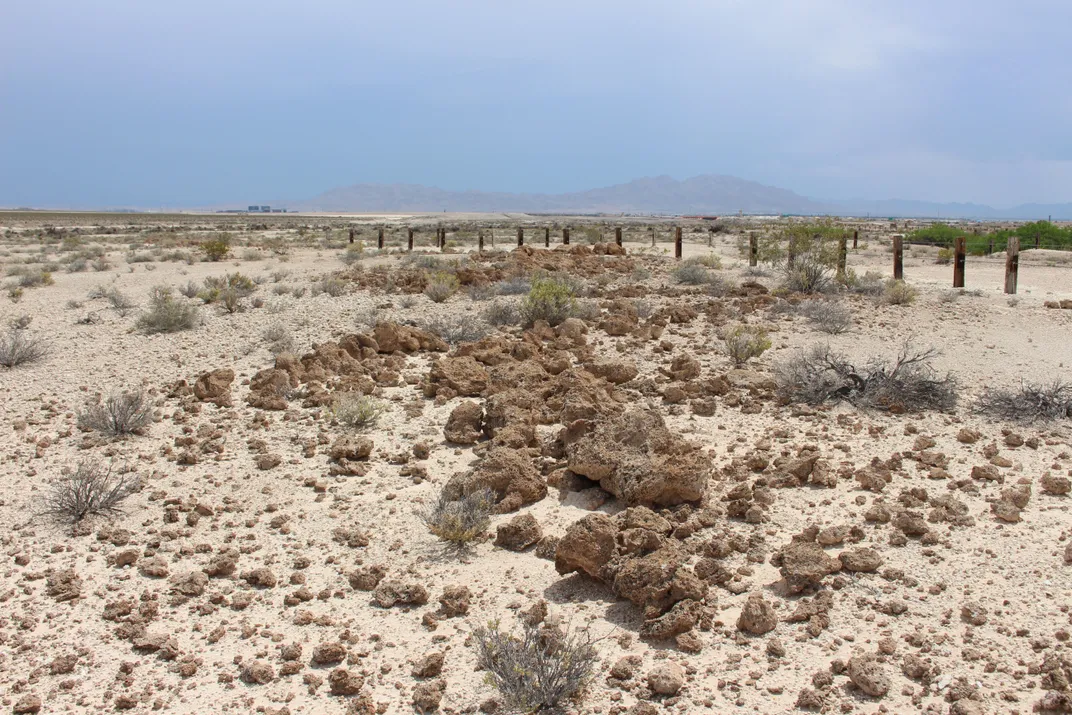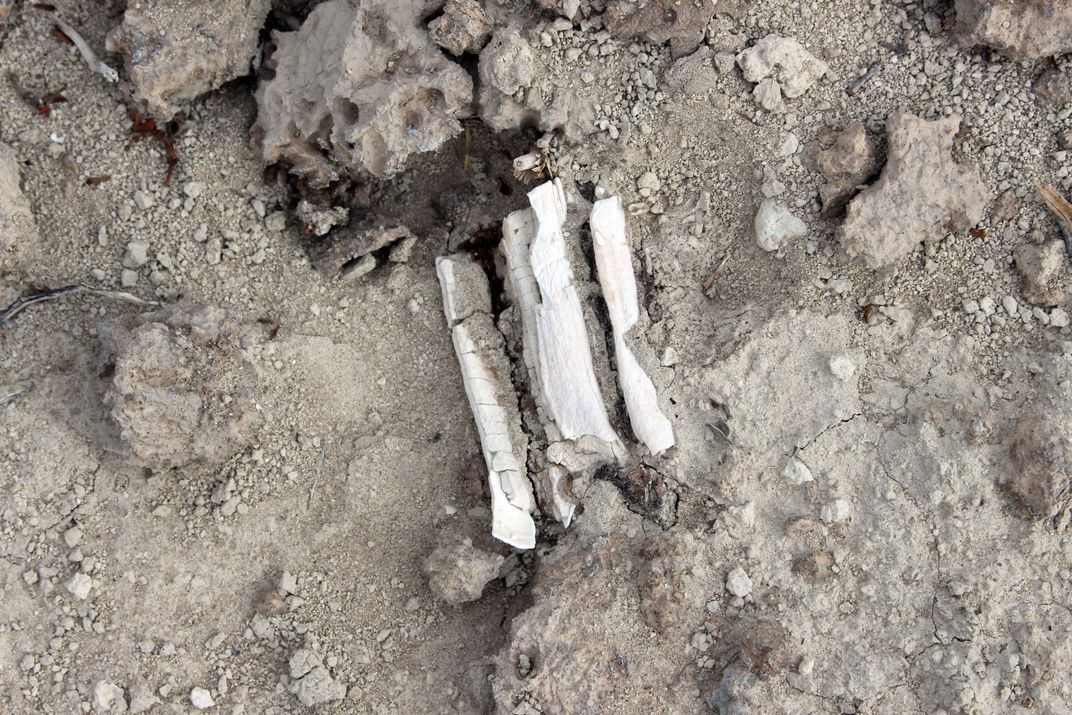Discover a Fossil Jackpot Off the Las Vegas Strip
Remains of mammoths, camels and other beasts of the Ice Age tempt visitors out of Sin City and into Tule Springs National Monument
/https://tf-cmsv2-smithsonianmag-media.s3.amazonaws.com/filer/c1/4f/c14f93ea-7f6f-4634-ab3c-07176333f75d/img_4604_copy.jpg)
Las Vegas is a city built on vice. The billboards for strip clubs, sex-aid supply shops and casinos that dot I-15 make that clear before you even reach the city’s center. But that’s not the only foundation of this gambler’s oasis. Sin City was erected on an Ice Age boneyard.
To build Caesar’s Palace, the Bellagio, the Luxor and the rest, construction crews ground through the Las Vegas Formation—a layer of dusty white rock that covered the valley floor, flecked with the remains of mammoths, camels, horses and other great beasts that roamed the basin between 200,000 and 13,000 years ago. No one knows how many of these creatures were exhumed, carried off or destroyed in the process, because Nevada lacks the state regulations to protect such fossil treasures. In time, just a pocket of undeveloped land remained outside of North Las Vegas, penned in between the creep of suburban sprawl and the rise of the Las Vegas Range. Looking out at the low white hills he’s been studying since 1991, Eric Scott of the San Bernardino County Museum calls it the “last gasp” of Ice Age Las Vegas.
This is where paleontologists made their stand, and now that pocket of fossil treasure has been saved. On December 19, 2014, Congress established this 22,650-acre strip of land as the Tule Springs Fossil Beds National Monument.
Tule (pronounced “tool-ee”) Springs took a long and circuitous route to becoming America’s newest fossil park. Naturalists have known since at least 1903 that the bones of ancient elephants could be found in the area, and a few early collecting trips turned up remnants of Ice Age horses, bison and American lion. But no one seemed to pay them much attention until the early 1930s, when archaeologist Fenley Hunter believed that he had found a flake of obsidian among the mammals—what he and others interpreted as an association, and maybe even interaction, between prehistoric people and the long-lost megabeasts of the Pleistocene.
Other expeditions seemed to find charcoal, which was interpreted as the leftovers of mammoth roasts, along with other evidence of human habitation, culminating in the Big Dig of 1962-63. You can still see the scars of the project today. Ten squared-off trenches run through the barren rock, the longest of which cuts more than a kilometer through the desert. These excavations, led by C. Vance Haynes, Jr., were not so much about preserving artifacts and bones as establishing a timeline. To pin down whether people and mammoths interacted, the researchers needed to know when they each lived in this place. The only way to do that was to read the rock in fine detail.
For the archaeologists, the project was a bust. Over the course of two years the researchers moved an estimated 200,000 tons of sediment but could not find any clear indication of human presence more than 13,000 years old. That means people showed up after the mammoths, sloths, sabercats and other megafauna had already vanished. And even though paleontologists had better luck making fossil finds, many thought Tule Springs could not compete with the Ice Age riches of the La Brea asphalt seeps just a few hours’ drive to the southwest. The desert site was left to gun enthusiasts, who dragged out old TVs and appliances to blast apart in the wasteland.

Scott and geologist Kathleen Springer, also of the San Bernardino County Museum, changed that in 2003 and 2004. Dodging the occasional recreational bullet, they led teams that scoured the area for whatever fossils had not already been excavated or carried off, and they hit the paleontological jackpot. Springer and Scott ultimately spotted 514 distinct fossil sites and collected 1,325 fossils.
The fossils that come out of these rocks are usually white or butterscotch-colored fragments that are not as aesthetically pleasing as the often-complete, “La Brea brown”-colored bones of the famous tar pits. But it’s what they can tell us, not their looks, that’s important. The remains were laid down in a wet environment that would look totally alien compared to the parched, increasingly developed desert of today. And while the previous generation of researchers envisioned vast lakes where prehistoric people ambushed North America’s last truly big game, the surveys of Springer and Scott helped place Tule Springs in a new prehistoric context.
Under the midday sun, with the nearby Las Vegas skyline seeming to dance in the heat, Springer walks over to what looks like a pile of porous brown rock. Up close, the stones snap into focus against the surrounding pale sediment, forming a long S-shape winding through the desert. This, Springer explains, is tufa, a type of limestone precipitated by “algal snot” that only forms in certain conditions. Baked in the heat with the nation’s thirstiest city at her back, Springer looks to the tufa and says, “I see water.”
Using this type of evidence, Scott and Springer have helped to revise the scene, changing our image of ancient Tule Springs into a vast desert wetland where springs burbled up from the ground to create meandering streams. That’s what made the region so rich in prehistoric life. Plants grew where the water was, providing ample forage for bison, camels and mammoths. This was a “honeypot” to the local dire wolves, sabercats and other carnivores, Scott says, and the same water that set up this food web carried the sediment that later buried the bones of the local creatures.
Preserving the site now is crucial, because the rock and bone create a bridge between prehistoric and modern Las Vegas, says acting park superintendent Vincent Santucci. And with the West’s water ever in question, knowing how changing climates have affected desert water sources in the past can hopefully help us predict the shape of the future, Springer adds.
Where some envision huge camels loping through wetlands, though, others still see a shooting range. In the northern part of the park, where the occasional Joshua tree is the only thing that rises above head height between you and the mountains, firearm aficionados congregate to unload into the desert, creating a carpet of rainbow-colored shotgun shells between the low fossiliferous hills. Encouraging the shooters to find a different spot for target practice will be another step in making the park more visitor-friendly, Santucci says. Right now the only way to see Tule Springs is Edward Abbey-style—leaving your car at the old Bureau of Land Management barricades and hiking in with enough sunscreen and water to survive a saunter through the desert.
In time, though, Santucci envisions Tule Springs becoming a jewel of the park system. A visitor center, interpretive exhibits and other welcoming improvements will eventually work their way through the process of planning and approval. Right now, though, only one thing is for sure: “The only decision we’ve made with absolute certainty”, Santucci says, “was that there will be no slot machines in the visitor center.”
/https://tf-cmsv2-smithsonianmag-media.s3.amazonaws.com/accounts/headshot/RileyBlack.png)



/https://tf-cmsv2-smithsonianmag-media.s3.amazonaws.com/accounts/headshot/RileyBlack.png)